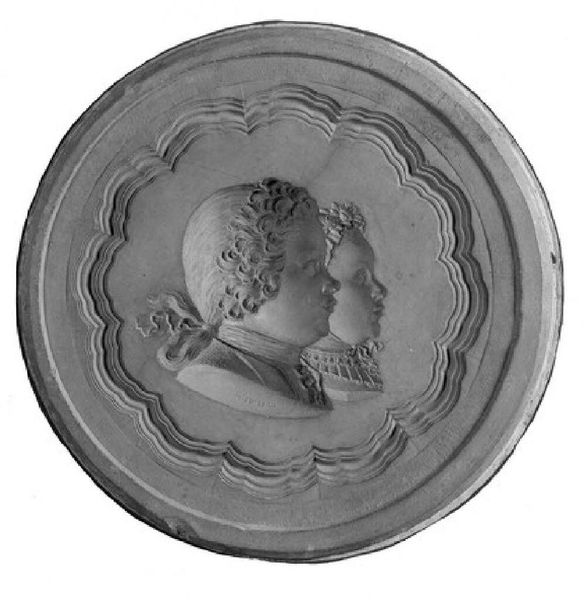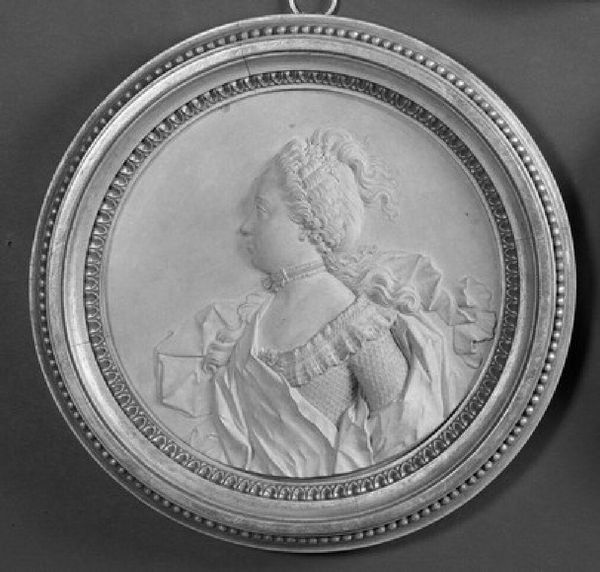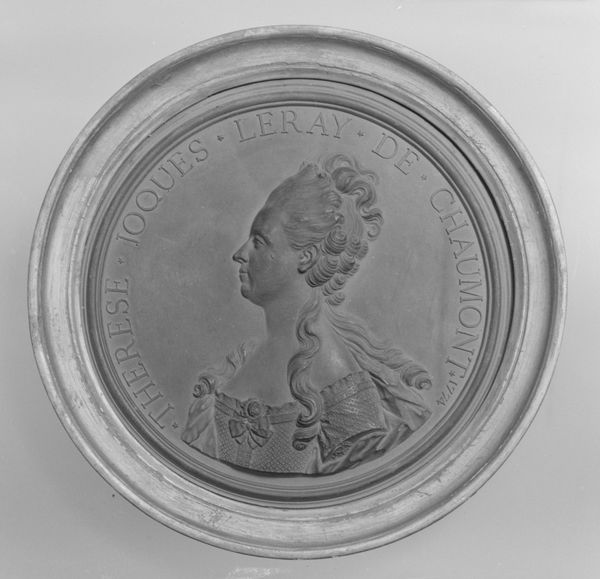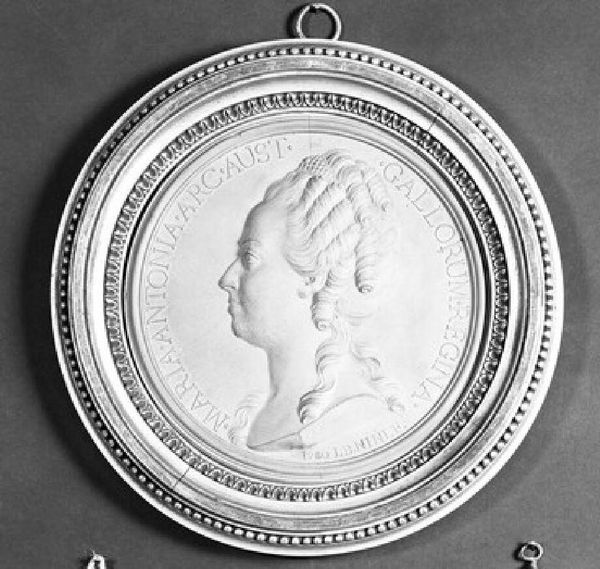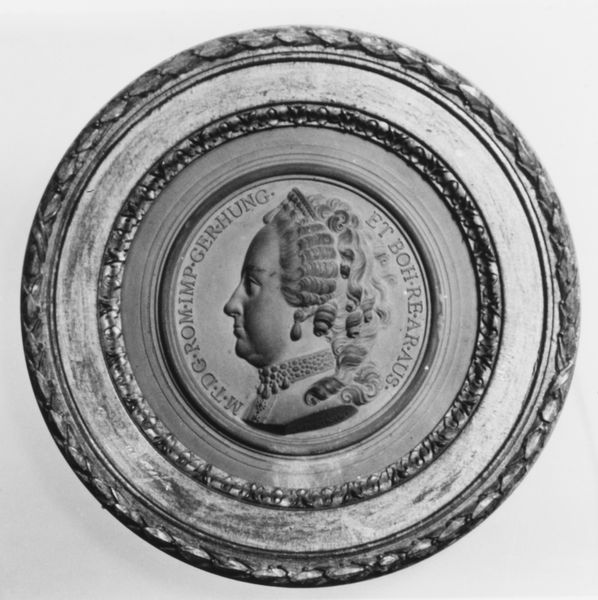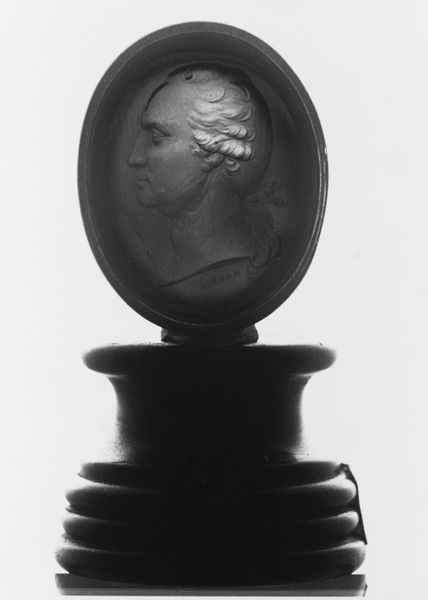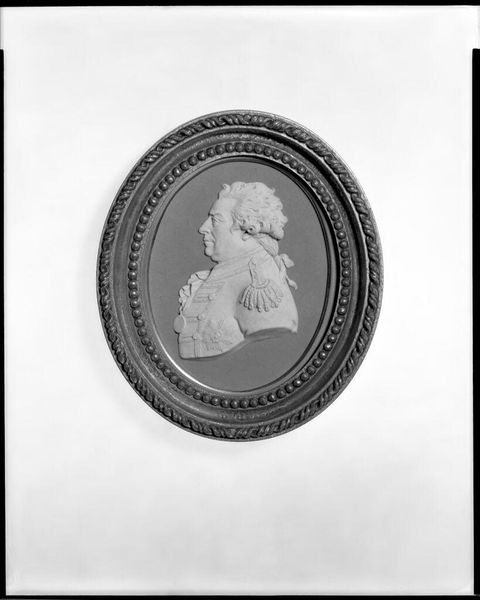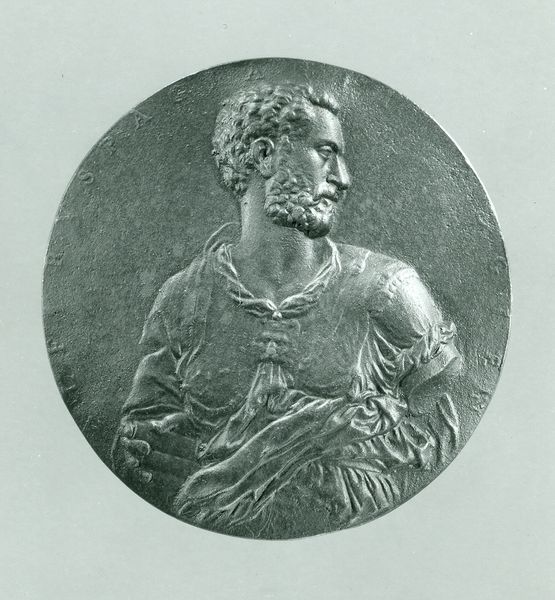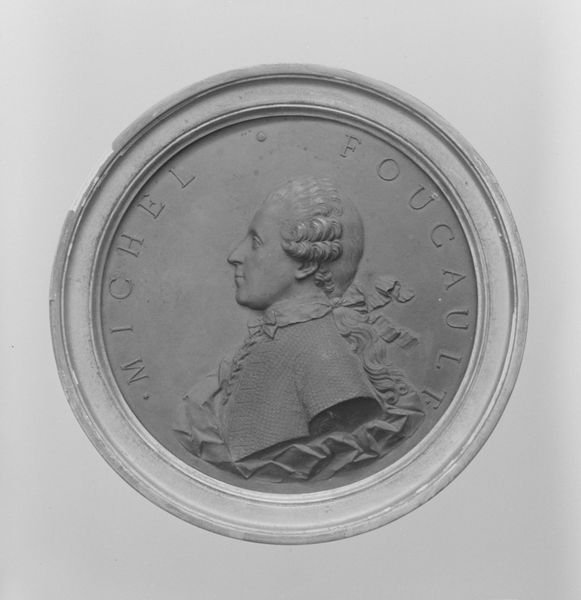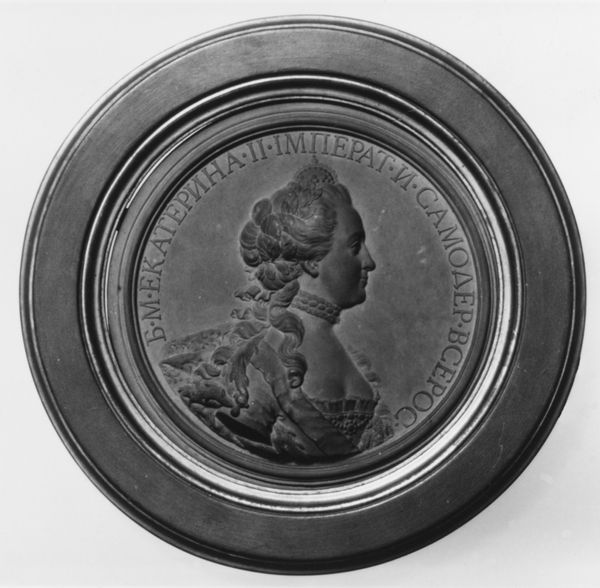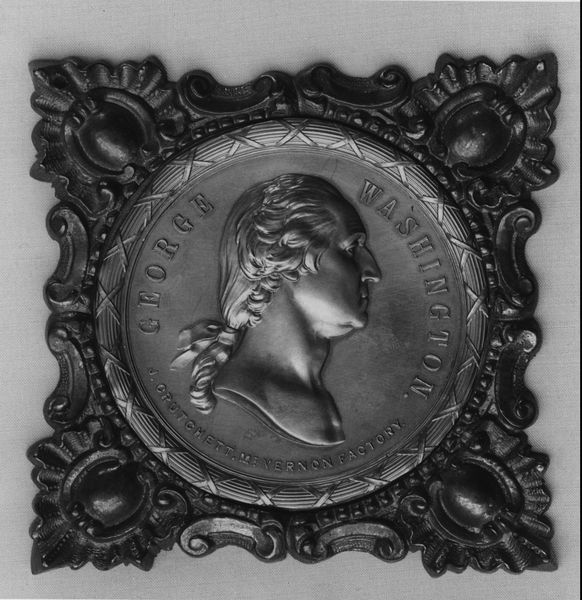
Marie-Catherine Jacquet and her husband, Orien Marais 1775
relief, sculpture
portrait
neoclacissism
sculpture
relief
sculpture
decorative-art
Copyright: Public Domain
Curator: What a striking piece. We’re looking at a terracotta relief portrait created around 1775 by Jean-Baptiste Nini. It’s currently housed here at the Metropolitan Museum of Art. The work depicts Marie-Catherine Jacquet and her husband, Orien Marais. Editor: It's beautiful, austere, almost like looking at a coin. I'm immediately struck by the precision in the rendering of their profiles, the delicate detail in the hairstyles, the fabrics. It makes me wonder about the level of craft involved. Curator: Nini was a master of terracotta portraiture, achieving widespread recognition. These reliefs, produced in series, became quite fashionable, particularly among the bourgeoisie eager to embrace neoclassical ideals. Think about the labor and distribution networks required to produce these portraits, giving patrons access to art in a way they didn't previously have. Editor: And to what extent does this medium dictate the message? The very nature of terracotta, its relative affordability compared to marble or bronze, its susceptibility to wear and tear, speaks to a different relationship between art, class, and consumption. Curator: Exactly. Its relative affordability certainly contributed to the popularity of this Neoclassical artwork within the middle class, signaling their aspirations. These were the merchant classes flexing newfound cultural capital through commissioned art. The portrait's formality aligns with that Neoclassical desire for order after the Rococo. The clean lines, the focus on profile… it evokes Roman cameos, connecting the sitters to a lineage of power and respectability. Editor: And the frame! The materiality of that ornate circle around the central image almost acts as a miniature proscenium arch. It reminds us that even in intimacy, representation involves display, that there’s an audience, even if it’s imagined. What do we know about their own occupations? How did these influence their aesthetic taste, their self-fashioning through this piece? Curator: Fascinating points to consider. Orien Marais was a wine merchant; Marie-Catherine Jacquet, of course, his wife. Their commissioning of this piece shows they wished to associate with a refined class, but perhaps we need to explore family records to ascertain more accurately the nature of their influence on the art world. Editor: Absolutely. Understanding their place in the socio-economic fabric helps illuminate how images participate in constructing identity, circulating status, even dictating value in their day. Curator: A fruitful analysis, indeed, and, certainly, avenues worth pursuing in greater detail. It’s been fascinating to explore these intertwined dynamics of medium and message with you.
Comments
No comments
Be the first to comment and join the conversation on the ultimate creative platform.
